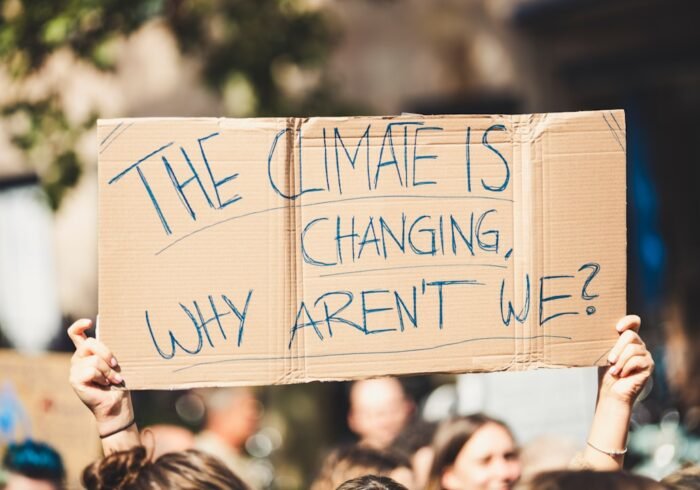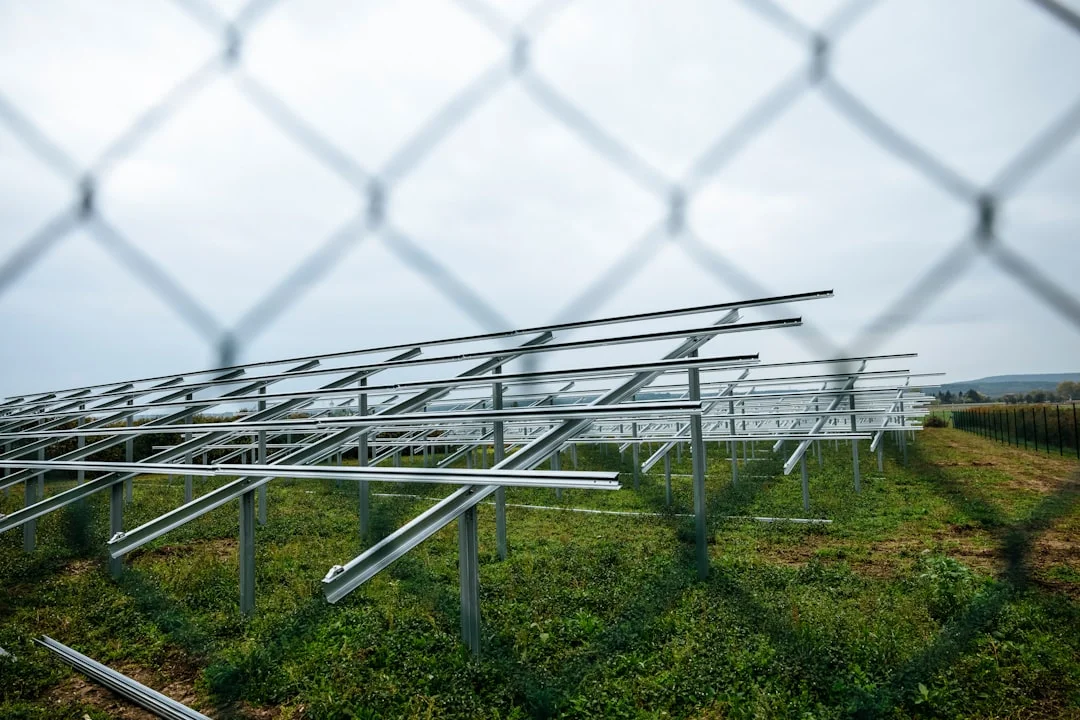The Complex Issue of Climate Change One of the most important issues confronting humanity at the moment is climate change. It refers to long-term changes in Earth’s temperature, precipitation patterns, and other atmospheric conditions that are mostly caused by industrial processes, deforestation, and the burning of fossil fuels. As a result of these activities, the atmospheric concentrations of greenhouse gases have significantly increased, causing global warming and a series of other environmental changes. The consequences of global warming go well beyond just increased temperatures; they include a broad range of ecological, social, and economic problems that demand immediate attention.
Key Takeaways
- Climate change is a global phenomenon characterized by rising temperatures and changing weather patterns.
- Climate change has a significant impact on biodiversity, leading to habitat loss, species extinction, and altered migration patterns.
- Ecosystems are experiencing changes such as altered water availability, increased frequency of natural disasters, and shifts in plant and animal populations.
- Species are shifting their distribution in response to climate change, moving towards cooler regions or higher altitudes.
- Climate change affects food chains by disrupting the availability of resources and altering the interactions between species.
One cannot stress how urgent it is to address climate change. According to scientific consensus, the world may experience catastrophic repercussions, such as extreme weather events, rising sea levels, and extensive habitat destruction, if current trends continue. Human societies that rely on stable climates for agriculture, water supply, and general well-being are also at risk from these changes, in addition to the natural world.
The need for all-encompassing strategies to lessen the effects of climate change and adjust to the new realities it brings is growing along with awareness of the phenomenon. The variety of life on Earth, or biodiversity, is closely related to ecosystem health & the services that ecosystems offer. Given how difficult it is for many species to adapt to quickly changing conditions, climate change poses a serious threat to biodiversity. For a variety of organisms, changes in temperature and precipitation patterns can interfere with migratory routes, breeding cycles, & food availability. Ocean acidification and rising sea temperatures, for example, pose a special threat to coral reefs, which support a wide variety of marine life. In addition to the species that live in these ecosystems, coastal communities that depend on fishing and tourism are also significantly impacted by coral bleaching.
Also, pollution and habitat loss are two current threats to biodiversity that climate change may make worse. Already endangered species may go extinct as ecosystems experience more stress. Deteriorations in ecosystem resilience & health can follow a cascade of losses in biodiversity.
| Metrics | Data |
|---|---|
| Temperature Change | 1.0°C increase in global average temperature since the late 19th century |
| Sea Level Rise | 3.2 mm per year rise in global sea levels since 1993 |
| Extreme Weather Events | Increased frequency and intensity of hurricanes, heatwaves, and heavy rainfall events |
| Species Extinction | Accelerated rate of species extinction due to habitat loss and changing ecosystems |
| Ocean Acidification | 30% increase in ocean acidity since the Industrial Revolution |
Pollination, water purification, & carbon sequestration are just a few of the vital services that may be jeopardized by this decline, which could ultimately affect human well-being and livelihoods. Conserving biodiversity is essential to climate resilience & sustainable development, and it is not just an environmental issue. Ecosystems are dynamic beings that react to environmental shifts. Ecosystems around the world are undergoing significant changes due to climate change, which is changing their composition and structure.
For instance, the species composition of forests is changing as a result of some trees thriving in warmer climates while others struggle. For the numerous species that rely on these habitats for survival, this change may result in a reduction in the productivity and health of the forests. Also, wetlands are losing habitat for many aquatic & terrestrial species as a result of rising sea levels encroaching on these crucial ecosystems. The impact of climate change on ecosystems is not uniform; it varies by region & ecosystem type. Melting ice caps in polar regions are changing the landscape and endangering cold-adapted species.
By contrast, as temperatures rise and precipitation patterns change, arid regions may see a greater degree of desertification. Ecosystem services that are essential to human survival, like carbon storage and clean water supplies, may be lost as a result of these changes. Creating successful conservation plans and guaranteeing the sustainability of natural resources require an understanding of how ecosystems react to climate change. As habitats & environmental conditions change due to climate change, many species are compelled to migrate in search of better living conditions.
We call this phenomenon “shifts in species distribution.”. While some species might relocate to more temperate regions in search of safety, others might move toward higher latitudes or altitudes where temperatures are lower. The ecological relationships that currently exist may be upset by these changes, and species may become more competitive for resources.
Further endangering biodiversity is the possibility that invasive species will flourish in novel habitats where native species cannot successfully compete. These changes in distribution have effects on entire ecosystems, not just specific species. Variations in species composition can have an impact on nutrient cycling and food webs, with unanticipated consequences for both human and wildlife populations.
For instance, if a major predator relocates to a new region as a result of climate change, it may have an effect on prey populations, which in turn may have an effect on the plants that those prey species depend on for sustenance. For conservation efforts to preserve biodiversity & uphold ecosystem stability in the face of climate change, an understanding of these dynamics is essential. The complex networks known as food chains show how nutrients & energy move through ecosystems. There are several ways in which climate change could upset these chains.
For example, changes in precipitation and temperature can have an impact on primary producers, which are the foundation of food chains & include plants & phytoplankton. If these organisms struggle to thrive due to changing conditions, it can have cascading effects on herbivores and subsequently on predators higher up the chain. Also, the timing of biological events, or phenology, can be impacted by climate change. For instance, mismatches that endanger pollinator populations and plant reproduction may arise if warmer temperatures cause plants to bloom earlier but pollinators do not modify their life cycles accordingly. Human food security may also be jeopardized by such disturbances; communities that depend on fishing for their subsistence may experience serious difficulties if fish populations fall as a result of altered habitats or food supplies.
In order to solve these problems, a comprehensive knowledge of food webs & proactive steps to guarantee their climate change resilience are needed. Minerals, water, and soil are examples of natural resources that are essential to both economic growth & human survival. These resources are at serious risk from climate change, which will change their quality & availability. For example, shifting precipitation patterns may result in floods or droughts that impact freshwater resources vital to agriculture and drinking water.
As demand increases in tandem with population growth, water scarcity is becoming a more urgent problem in many areas. Climate change also puts soil health at risk. By causing erosion & the loss of organic matter, rising temperatures can degrade soil, decreasing its fertility and ability to support crops. For food production systems around the world, this deterioration in soil quality could have disastrous effects.
Climate change may also make it more difficult for various industries, urban development, and agriculture to compete for natural resources, which could result in disputes over usage & access rights. As we adapt to the challenges presented by climate change, sustainable management practices are crucial to ensuring that natural resources are available for future generations. Global efforts to address the crisis now heavily rely on adaptation & mitigation strategies in response to the complex challenges presented by climate change. Adaptation is the process of changing social-ecological systems to reduce damage or take advantage of positive opportunities brought about by climate change. To increase resistance to extreme weather events, this can involve creating crops that can withstand drought, improving water management techniques, or repairing damaged ecosystems.
By lowering greenhouse gas emissions, mitigation strategies aim to lessen or even reverse the effects of climate change. Making the switch to renewable energy sources, like wind or solar, is one practical strategy that many nations are using. Carbon footprints can also be greatly decreased by encouraging energy efficiency in homes and businesses. Along with restoring wildlife habitats, reforestation initiatives are essential for removing carbon dioxide from the atmosphere.
In order to develop sustainable solutions that tackle the underlying causes of climate change & get ready for its unavoidable effects, governments, corporations, communities, and individuals must work together on both adaptation and mitigation. Although the future of climate change is still uncertain, it is becoming more urgent. Natural ecosystems and human societies may suffer greatly if substantial global action is not taken to reduce emissions and adjust to changing conditions. Nonetheless, there is still hope because significant change is possible due to technological advancements, growing public support for sustainable practices, & heightened environmental awareness. In order to effectively navigate this complex challenge, a number of recommendations come to light.
First, governments should give priority to policies that encourage the development of renewable energy sources while gradually eliminating subsidies for fossil fuels. Secondly, funding studies on climate-resilient farming methods will be essential to guaranteeing food security in a changing environment. Thirdly, fostering international cooperation is essential; climate change knows no borders, necessitating collaborative efforts across nations to share knowledge and resources effectively. Conclusively, combating climate change necessitates a comprehensive strategy that includes comprehending its effects on ecosystems, species distribution, food chains, biodiversity, natural resources, adaptation tactics, and mitigation initiatives. Society can strive toward a more sustainable future that strikes a balance between environmental stewardship & human needs by acting now, both individually and collectively.



